
The Prado Museum, officially known as Museo Nacional del Prado, is the main Spanish national art museum, located in central Madrid. It is widely considered to house one of the world's finest collections of European art, dating from the 12th century to the early 20th century, based on the former Spanish royal collection, and the single best collection of Spanish art. Founded as a museum of paintings and sculpture in 1819, it also contains important collections of other types of works. The Prado Museum is one of the most visited sites in the world and is considered one of the greatest art museums in the world. The numerous works by Francisco Goya, the single most extensively represented artist, as well as by Hieronymus Bosch, El Greco, Peter Paul Rubens, Titian, and Diego Velázquez, are some of the highlights of the collection. Velázquez and his keen eye and sensibility were also responsible for bringing much of the museum's fine collection of Italian masters to Spain, now one of the largest outside of Italy.
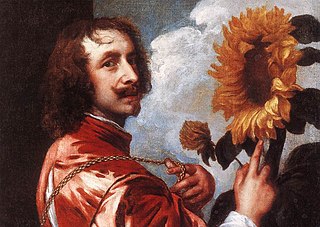
Sir Anthony van Dyck was a Flemish Baroque artist who became the leading court painter in England after success in the Spanish Netherlands and Italy.
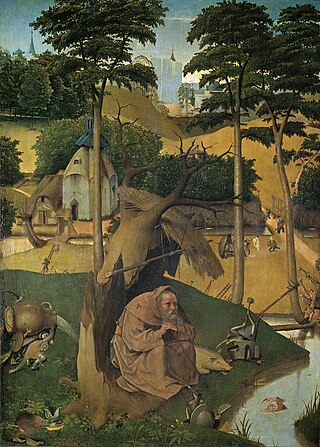
The Temptation of St. Anthony is a painting of disputed authorship, attributed to either Hieronymus Bosch or a follower. It is now in the Museo del Prado, in Madrid.

Jan van Kessel the Younger or Jan van Kessel II, known in Spain as Juan Vanchesel el Mozo or el Joven, was a Flemish painter who after training in Antwerp worked in Spain. Known mainly for his portraits he became a court painter to the King and Queen of Spain. A few landscapes and mythological and allegorical scenes have also been attributed to him. He was formerly believed to have been active as a landscape painter, but this is now no longer generally accepted.

Pedro Nuñez de Villavicencio (1635–1700) was a Spanish painter of the Baroque period.

Mateo Cerezo, sometimes referred to as The Younger was a Spanish Baroque painter; known primarily for religious works and still-lifes.

Jacob Peter Gouwy or Jacob Peter Gowy was a Flemish Baroque painter of history paintings and portraits. He collaborated with Peter Paul Rubens and spent time in England where he was active as a portrait painter. As the creator of a large picture of a horse painted in England he can be considered one of the pioneers of the genre of portraits of horses.
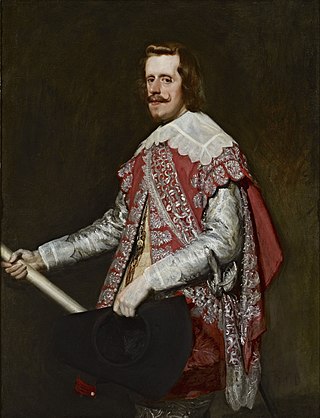
The Portrait of Philip IV in Fraga is a mid-length portrait of Philip IV of Spain by Velázquez. It was painted over the course of three sessions in June 1644 in Fraga, where Philip IV had moved the royal court as part of the "Jornada de Aragón" which resulted in the recovery of Lérida from France, which had occupied the city earlier during the Reapers' War. The portrait was gifted by Philip V to his son, the future Philip, Duke of Parma, and the painting left Spain along with him in 1748. In 1911 it was acquired by the Frick Collection, where it is currently on display.

The Adoration of the Magi is a very large oil painting by the Flemish Baroque painter Peter Paul Rubens. He first painted it in 1609 and later gave it a major reworking between 1628 and 1629 during his second trip to Spain. It is now in the Museo del Prado in Madrid.

The Crowning with Thorns is a 1618–1620 painting by Anthony van Dyck. He produced it aged 20 during his first Antwerp period, when he was the main studio assistant and pupil of Peter Paul Rubens. It shows Rubens' influence in its relatively sombre palette, chiaroscuro and highly realistic portrayal of musculature. He seems to have completed it early during his stay in Italy, since it also shows the influence of Titian and other Venetian painters in Jesus' face.

The Betrayal of Christ is a c. 1620 painting by the Flemish painter Anthony van Dyck now at Museo del Prado in Madrid. He also produced two other versions of the same subject at around the same time, now in Bristol and Minneapolis.
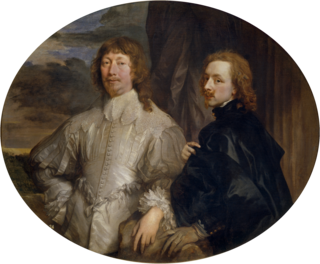
Self-portrait with Sir Endymion Porter is a self-portrait by Anthony van Dyck, showing him with his patron Sir Endymion Porter.

Peeter Symons or Peeter Simons was a Flemish painter only known for his collaboration with Rubens in 1636 on the commission from the Spanish king Philip IV of Spain to create a series of mythological paintings to decorate the Torre de la Parada, a hunting lodge of the king near Madrid.

Portrait of a Young Nobleman is a 1600–1605 oil on canvas portrait by El Greco, originally in the quinta del Duque del Arco at the Royal Palace of El Pardo in Madrid but now in the Museo del Prado. It was long thought to show the poet Baltasar Elisio de Medinilla, but this has been disproven, and its subject is now unknown. It appears to have been influenced by portraits by Titian and Tintoretto, who El Greco knew whilst in Venice.

Ixion is a 1632 oil painting, signed and dated by Jusepe de Ribera. It shows a scene from Classical mythology, of Ixion being tortured as the eternal punishment meted out by Zeus. It is one of a series of four paintings by Ribera of the four "Furies" or "Condemned" from Greek mythology. It is held by the Museo del Prado in Madrid, along with Ribera's painting of Tityos; the other two, of Sisyphus and Tantalus, are lost.
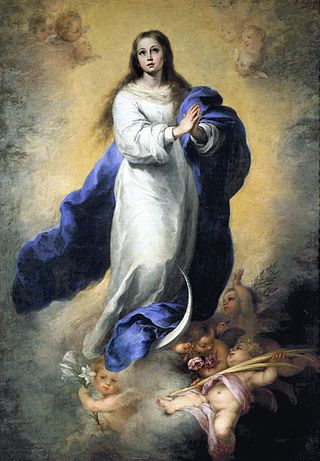
The Immaculate Conception of El Escorial is a circa 1660–1665 oil religious painting by the Spanish Baroque artist Bartolomé Esteban Murillo, now in the Museo del Prado in Madrid. Murillo's many artistic depictions of the immaculate conception of the Virgin Mary were enormously influential on later art. This painting is regarded as one of his best. It was earlier identified as the Immaculate Conception of the Granja due to a mistaken understanding of its history.

The collection of twenty-eight British paintings in the Museo del Prado is one of only two significant collections of British art in Spain - the other is the Museo Lázaro Galdiano, a private collection influenced by the personal taste of Paula Florido, the wife of its founder José Lázaro Galdiano. There is little British art in the former Spanish royal collection due to the English and Scottish Reformations and the ensuing tensions between Spain, England and Scotland. The works entered the collection through both purchase and donation, two in the 1880s and the rest mostly in the 20th century other than two at the end of the 19th century.

Diana and a Nymph Surprised by a Satyr is a 1622-1627 oil on canvas painting resulting from a collaboration between Anton van Dyck and Frans Snyders.

Saint Rosalia is a c.1625 oil on canvas painting by Anthony van Dyck. Originally owned by Giovan Francesco Serra di Cassano, it was bought by Philip IV of Spain via his Viceroy of Naples Gaspar de Bracamonte in 1664 and is now in the Museo del Prado in Madrid



















